Planning a trip to Vietnam and Cambodia but not sure when to go? The truth is – there’s no “bad” time to visit Indochina. Whether it’s misty mountain mornings in the north or golden afternoons by ancient temples in the south, the best time to visit Vietnam and Cambodia depends on your travel style and preferences. Each season has something special to offer. It’s all about knowing how to make the most of it.
True Indochina Tours will help you go beyond the travel brochures and into a more personal, insightful understanding of the best time to have Vietnam Cambodia tours, depending on what kind of traveler you are – whether you crave dry skies, cultural immersion, or simply the serenity of a season well-chosen.
1. Best Month to Visit Vietnam and Cambodia: A Weather-Based Guide for Smart Travelers
Choosing the right month to visit Vietnam and Cambodia isn’t just about avoiding rain – it’s about tuning into the rhythm of nature, culture, and human connection in two of Southeast Asia’s most emotionally resonant countries. As someone who’s wandered through misty mountain towns in Northern Vietnam and watched the sunrise over Angkor Wat when the air is dry and golden, I can tell you: the timing of your visit will shape the memories you bring home.
1.1. Discover Spring in Northern Vietnam and the Lush Mekong Delta

Spring (March to April) is often regarded as the best time to visit Vietnam and Cambodia, especially for travelers seeking a harmonious blend of nature and cultural vibrancy. In Northern Vietnam, mild temperatures and blooming landscapes mark the end of the cold season. The mist clears over Sapa’s terraced fields, and Hanoi pulses with post-Tết life and cherry blossoms.

In the south, the Mekong Delta bursts with green vitality. Waterways shimmer under soft sunlight, and floating markets are at their most colorful. Spring in the delta is also when lotus flowers bloom in quiet ponds along the canals – serene scenes that feel untouched by time.
1.2. Dry Season Magic – The Golden Time to Explore Cambodia’s Angkor Temples
From November to February, Cambodia enters its dry season – a period widely recognized as the best time of year to travel to Vietnam and Cambodia, particularly for those drawn to Siem Reap and its ancient treasures. Crisp, dry mornings greet early risers at Angkor Wat, where light and shadow dance across centuries-old stones.
Dry roads, cooler temperatures, and clear skies make travel seamless during this season. The architectural details of temples such as Bayon and Ta Prohm reveal their full majesty in this golden light. For photography, temple-hopping, or cultural immersion, this is a season of clarity and wonder.
1.3. Avoid Rainy Season – Time to Consider If You Don’t Like Carrying a Raincoat All the Time
Let’s talk real travel talk: not everyone is built for monsoons. From May to October, both countries enter their rainy season. While some adventurous souls might enjoy the moody skies and fewer tourists, others may find themselves endlessly searching for dry socks and good coffee.
Heavy rains can affect access to certain mountainous regions and cause delays in travel schedules. Although cultural life continues regardless of the weather – often with a unique intimacy during stormy afternoons this may not be the Vietnam Cambodia best season to visit for those preferring open skies and predictability.
2. Best Time of Year to Travel to Vietnam and Cambodia for Unique Local Experiences
Beyond weather charts and travel brochures lies something more powerful – the rhythm of culture. In Vietnam and Cambodia, time isn’t measured only by the turn of the seasons, but by the sound of drums at a village festival, the scent of incense during ancestral prayers, or the burst of colors from a lantern-lit street.
For those who don’t just want to see a place but truly feel it, choosing the best time of year to travel to Vietnam and Cambodia means aligning a journey with the region’s most profound and joyful cultural moments.
2.1. What Month Hosts the Best Cultural Festivals?
In Vietnam, February often falls during Tết Nguyên Đán (Lunar New Year) – the country’s most significant celebration. Streets bloom with peach blossoms in the north, apricot flowers in the south, and the air buzzes with firecrackers, laughter, and the scent of sticky rice. This is a month where homes open, families reunite, and entire cities transform into kaleidoscopes of joy and spiritual renewal.
Meanwhile in Cambodia, April brings the vibrant Khmer New Year (Chaul Chnam Thmey). Taking place during the height of the dry season, this three-day festival is filled with water fights, traditional dances, and temple rituals. It’s not just a celebration – it’s a cultural heartbeat.
2.2. Must-See Events in the Peak Seasons
Peak travel months (typically November to February) offer the best time to go to Vietnam Cambodia not only for weather but for festival access and logistical ease. During this period, both countries showcase themselves with full pride.
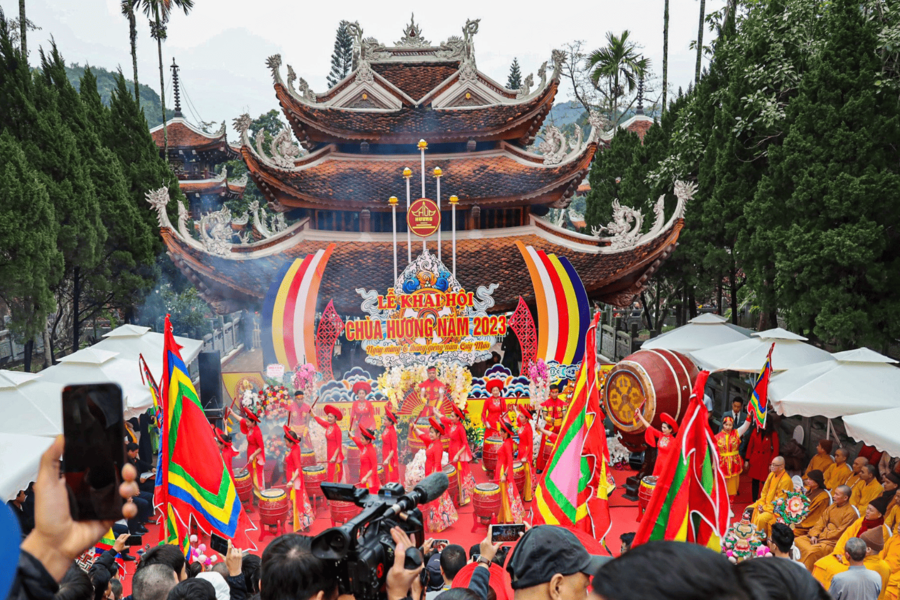
In Vietnam, the Perfume Pagoda Festival (late January to March) draws pilgrims and visitors deep into limestone mountains via boat and foot, combining spirituality with breathtaking scenery. In Cambodia, the Water Festival (Bon Om Touk) in November lights up Phnom Penh with boat races and riverside celebrations, marking the reversal of the Tonlé Sap River’s flow – an event as magical as it is scientific.
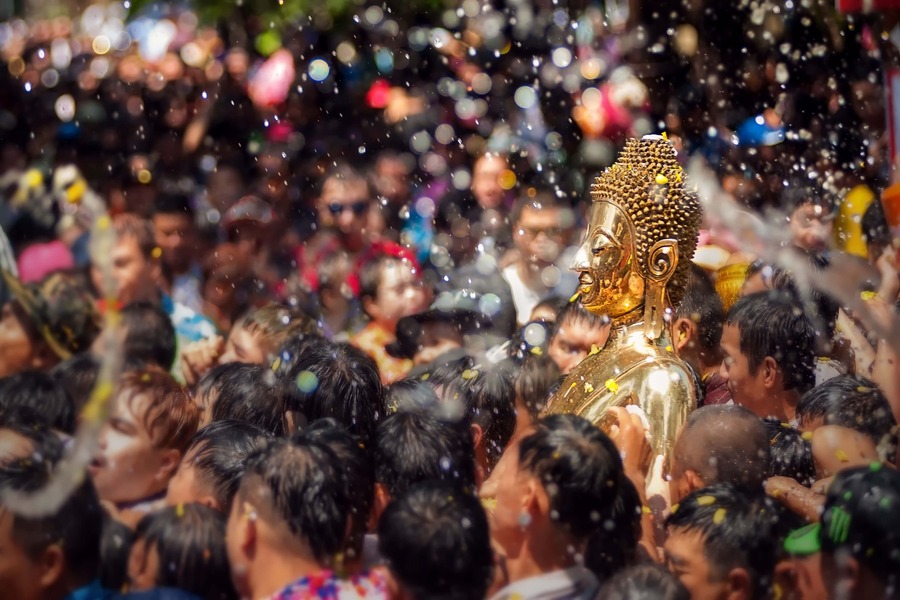
2.3. Things That Only Happen During “Peak Season” and How You Can Take Advantage of Them
Some moments simply cannot be replicated outside of the right season. The ethereal mist around Ha Long Bay at dawn in winter, or the sea of floating lanterns on Hội An’s full moon nights these aren’t just pretty sights, but timeless rituals embedded in local life.
During peak season, rural festivals also flourish. Think buffalo races in the Mekong, rice-harvest dances in the northern highlands, or Buddhist rituals in ancient pagodas. For those who align their travels with these ephemeral experiences, the rewards are far beyond what guidebooks promise.
3. Best Time to Go to Vietnam Cambodia: A Season-by-Season Travel Guide
Each season in Vietnam and Cambodia brings its own color palette, cultural pulse, and emotional mood. Choosing the best time to go to Vietnam Cambodia isn’t just about finding dry skies-it’s about syncing your journey with the soul of each region. This season-by-season guide helps break down what travelers can expect throughout the year from weather and festivals to landscapes and local life – so that each trip becomes a reflection of the season it unfolds in.
3.1. Spring – For Lush Scenery and Gentle Weather
Spring is nature’s quiet awakening across both countries. In Northern Vietnam, cool mists retreat to reveal mountains softly touched by sun and early crops. The rice terraces in Sapa and Mu Cang Chai begin to sprout tender green shoots, while plum and peach blossoms dot the highlands in pastel hues.
In central Vietnam, destinations like Hoi An and Hue bloom in a literal and metaphorical sense-gardens, rivers, and old towns reflect the energy of renewal. Meanwhile, Cambodia enjoys the tail end of the dry season, especially in Phnom Penh and the Angkor region. Here, temple stones absorb the last gentle sunlight before the heat intensifies.
For travelers seeking peace, introspection, and natural beauty, spring is often the best time of year to travel to Vietnam and Cambodia.
3.2. Summer – Hot, Humid, and Worth It for Beach Lovers
Summer comes with intensity: hot days, sudden downpours, and thick air that holds the scent of frangipani and roadside charcoal grills. Yet this season has its own rewards, especially for those who gravitate toward tropical coasts.
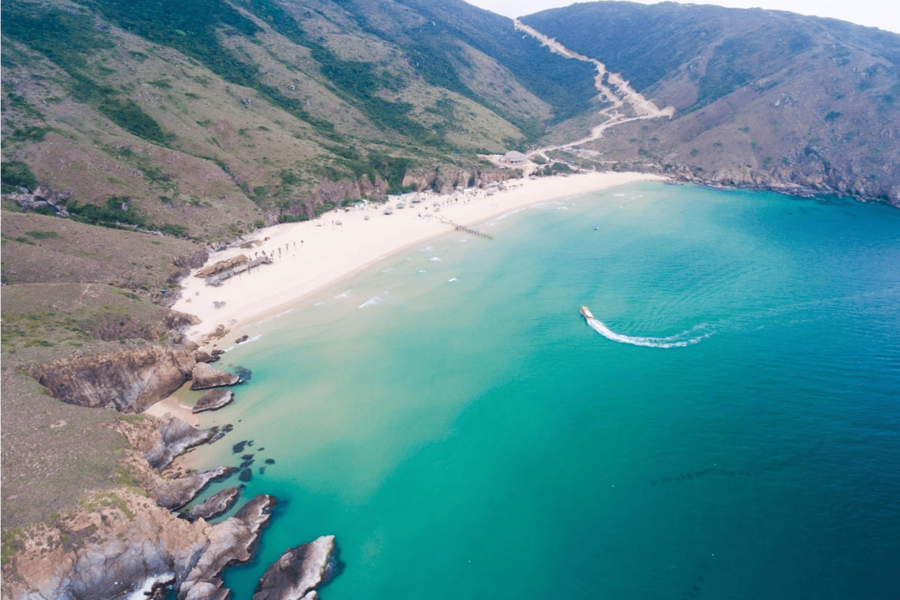
Vietnam’s central coast -Da Nang, Nha Trang, Quy Nhon comes alive under bright sun. Beaches are at their most swimmable, coral reefs vibrant, and seafood fresh and abundant. In Cambodia, the coastal town of Kep offers a slower pace, and Kampot’s rivers are ideal for kayaking under cloud-speckled skies.
While this isn’t the driest season, it appeals to travelers who don’t mind spontaneity who see beauty in the suddenness of a storm and enjoy the lushness that rain leaves behind. It’s not always the Vietnam Cambodia best season to visit, but it’s a poetic one.
3.3. Autumn – Romantic Hanoi, Calm Siem Reap
Autumn casts a golden calm across both nations. In Hanoi, the air becomes lighter, the sky high and blue. Locals sip egg coffee by lakeside cafés under falling leaves, and seasonal delicacies like cốm (young green rice) appear on street corners. There’s a nostalgia in the air-timeless, soft, and deeply Vietnamese.
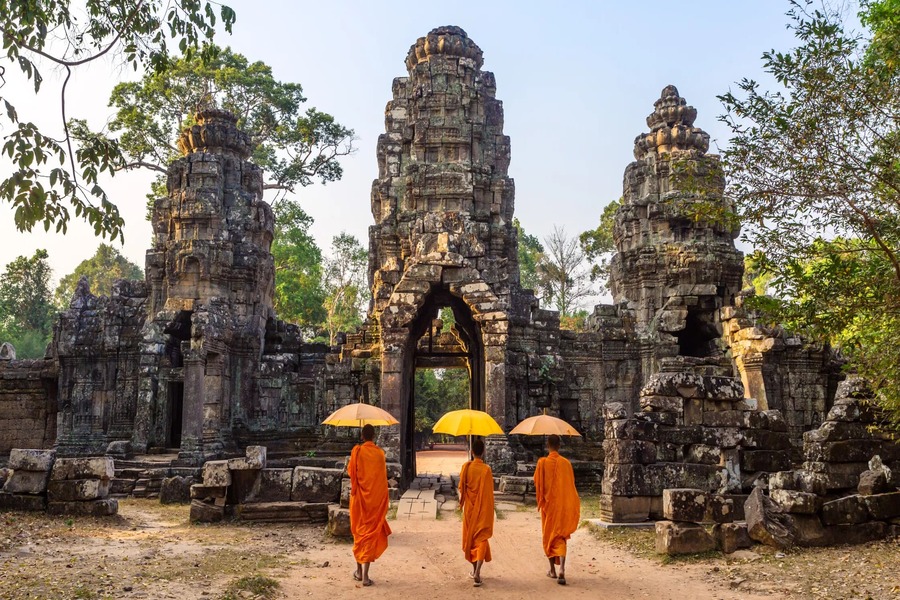
Meanwhile, Cambodia moves out of its wet season. In Siem Reap, the temples are framed by greenery still fresh from monsoons, but the skies begin to clear. There’s a sense of balance: less heat, fewer tourists, and a peaceful tempo in both nature and urban life.
This is one of the best months to visit Vietnam and Cambodia for photographers, couples, or those seeking reflection. The light is golden, the landscapes lush, and the energy – quietly uplifting.
3.4. Winter – Cool Weather, Warm Celebrations
Winter doesn’t bring snow, but it brings clarity. From Hanoi to Siem Reap, skies stretch clear and light falls softly on everything. Northern Vietnam turns crisp and invigorating – ideal for hiking in highlands or wandering through the ancient streets of the capital.
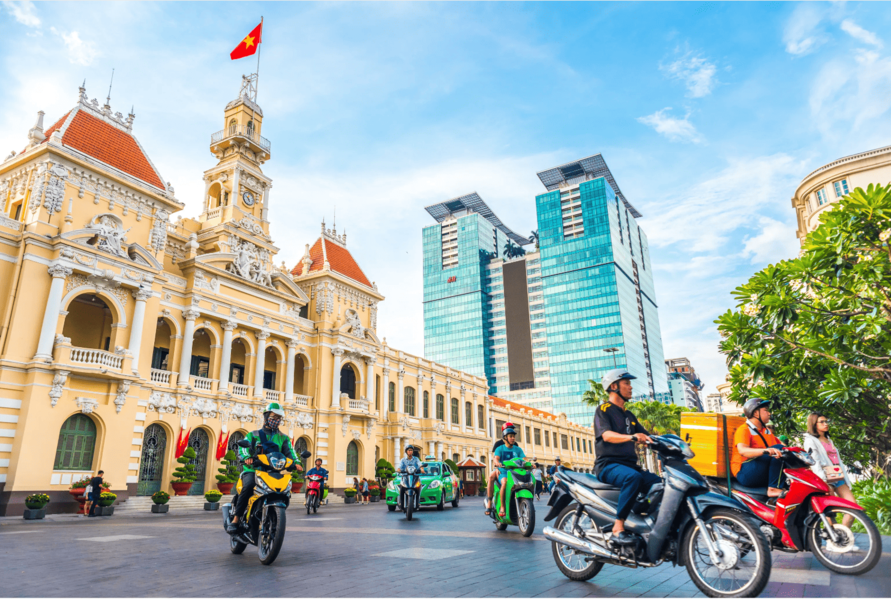
In the south, Saigon’s energy contrasts with dry, comfortable temperatures perfect for rooftop views or exploring the Mekong. Cambodia’s winter is widely regarded as the best time to go to Vietnam Cambodia, particularly for first-time visitors or those with a limited itinerary. Dry roads, open temples, and cool nights make for ideal travel conditions.
And then there are the celebrations. From Christmas markets in expat communities to Tet and Khmer New Year preparations, winter in these lands feels both global and deeply rooted in tradition.
4. Vietnam Cambodia Best Season to Visit for Nature, Culture, and Comfort
Some journeys are for ticking boxes. Others are for falling in love-with a place, a culture, a moment of stillness under foreign skies. For those seeking more than just sightseeing, understanding the Vietnam Cambodia best season to visit means curating an experience that feels balanced: between nature’s raw beauty, the heartbeat of local life, and the physical comfort that lets you absorb it all fully.
This final section brings together all elements-weather, landscapes, festivals, and emotional energy-to help travelers discover the “golden window” that aligns best with their travel personality.
4.1. Dry vs. Rainy Season – More Than Just Rain
The distinction between the dry and rainy seasons in Vietnam and Cambodia is often seen in purely practical terms – will it rain on the beach? Will the roads flood? But there’s more to it than that. The dry season (November to April) is not just about clear skies, but about accessibility, ease, and consistency. It’s when local life opens outward – markets flourish, boats run smoothly, and festivals light up towns across both nations.
On the other hand, the rainy season (May to October), though unpredictable, offers its own beauty. Rice terraces become emerald oceans, forests glisten after fresh downpours, and the air carries a rhythm of rebirth. For photographers, writers, and slow travelers, this season may offer the best time to go to Vietnam Cambodia, depending on their intention.
4.2. Best Time for Terraced Rice Fields, Lotus Lakes, and Coastal Retreats
Nature in Vietnam and Cambodia speaks loudest in certain months.
- For terraced rice fields, September is when the paddies in Sapa and Mu Cang Chai turn golden before harvest – a dramatic contrast against the cloudy highlands, perfect for trekking and photography.
- Lotus season (typically from June to August) fills ponds across the Mekong Delta and areas around Hue and Ninh Binh with delicate pink blooms – a quiet, meditative landscape.
- For beach lovers, March to early May offers warm waters and bright days along Vietnam’s central and southern coasts, as well as Cambodia’s Kep and Sihanoukville.
Each natural experience has its ideal moment, and together they define the best month to visit Vietnam and Cambodia depending on interest.
4.3. Ideal Months to Book a Cross-Border Vietnam – Cambodia Tour
To enjoy the most seamless and rewarding experience, it’s highly recommended to book your Vietnam – Cambodia tour at least 1 to 2 months before your planned travel dates. Early booking not only offers better availability for flights, accommodations, and experienced guides, but also gives time to research destinations, understand cultural nuances, and plan travel documents or health preparations with ease.
Here’s a quick seasonal guide to booking timelines:
- Planning to travel between December and March (dry season, ideal for cross-border journeys)? → Book in October or early November.
- Looking to explore golden rice terraces or lush landscapes in August to October? → Book around June or July.
- Targeting beach relaxation, wellness escapes, or low-season luxury between March and May? → Book in January or February.
- Traveling during festive months like January to April? → Book at least 2 months ahead to secure quality stays and access to local events.
Smart travel begins with smart timing. Booking ahead ensures not just better deals, but deeper experiences—when each moment feels well-paced, personal, and perfectly timed.

0 Comment